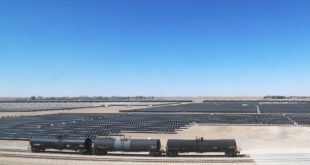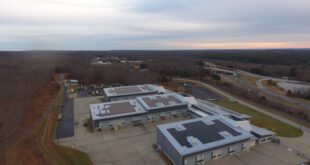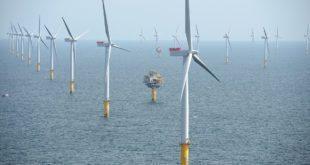Interior Department, State of California Announce Innovative Strategy for Renewable Energy and Conservation on Public Lands in California Desert
Renewable energy milestone continues to advance Administration’s clean energy goals in push toward Paris climate discussions
U.S. Secretary of the Interior Sally Jewell and California Secretary for Natural Resources John Laird today announced the final environmental review of an innovative landscape-scale blueprint to support renewable energy development and conservation on 10 million acres of federal public lands, managed by the Bureau of Land Management in the California desert. The release of the Final Environmental Impact Statement for Phase I of the Desert Renewable Energy Conservation Plan (DRECP) is a major step forward, and a key part of the collaborative effort to streamline renewable energy while conserving unique and valuable desert ecosystems and promoting outdoor recreation opportunities.
The blueprint is part of a larger, comprehensive effort with California, covering 22 million acres in the state’s desert region. Collectively, these lands contain the potential to generate up to 20,000 megawatts of renewable energy development, while meeting federal and state renewable energy and climate change goals through 2040.
“Using a landscape-level perspective, unprecedented collaboration and extensive public engagement, this phase of the Desert Renewable Energy Conservation Plan will facilitate clean energy development, creating new jobs while cutting carbon pollution,” Secretary Jewell said. “This strategy provides effective protection and conservation for wildlife, recreation and cultural resources, while encouraging streamlined renewable energy development in the right places.”
“The state of California has worked closely for years with the U.S. Department of the Interior to reach this milestone,” Laird said. “We salute our federal partners for this achievement. This foundational plan allows conservation, recreation and renewable energy development to fit together in a durable, balanced way.”
Phase I of the DRECP, which is managed by the Bureau of Land Management, designates Development Focus Areas with high-quality solar, wind and geothermal energy potential, access to transmission and would allow impacts to be managed and mitigated. Applications will benefit from a streamlined permitting process with predictable survey requirements and simplified mitigation measures, and Interior is considering additional financial incentives through an ongoing rulemaking process.
The first phase also identifies National Conservation Lands, and designates Areas of Critical Environmental Concern, wildlife allocations and National Scenic and Historic Trail management corridors to conserve biological, cultural and other values. Special Recreation Management Areas and Extensive Recreation Management Areas are identified to recognize and promote recreational opportunities and public access. These lands would be closed to renewable energy and benefit from adaptive management in the face of climate change.
“The plan released today will advance state and federal conservation goals in the desert regions of California while facilitating the timely permitting of renewable energy projects in appropriate areas,” said Neil Kornze, director of the Bureau of Land Management. “A vision for the desert, the DRECP represents an excellent example of collaboration among federal and state partners.”
The non-federal land component of the DRECP, Phase II, is ongoing, led by California and includes close coordination among federal, state, county and private land partners. The phased approach provides additional opportunities for agencies to work with counties and other stakeholders to address issues and concerns, and better align local, state and federal policies and goals. County planning efforts are critical because these jurisdictions have primary land-use and permitting authority on private lands. The counties include Imperial, Inyo, Kern, Los Angeles, Riverside, San Bernardino and San Diego.
“Having the federal component of the DRECP in place will be tremendously valuable as we continue to work with the counties and our state and federal agency partners on Phase II,” said Karen Douglas, commissioner of the California Energy Commission. “By providing certainty for development and conservation across approximately 10 million acres of public land, the BLM has set a strong foundation for achieving the broader vision of the DRECP.”
The overall planning effort for DRECP began in 2008, shortly after the desert region began experiencing a surge of applications for renewable energy projects. At that time, most applications for renewable energy projects were reviewed and approved on a case-by-case basis.
Between the draft DRECP released in September 2014 and today’s release of the Bureau of Land Management component, the agencies held 11 public meetings and received more than 16,000 comments. Based on these suggestions, the agencies made modifications to land area designations, provided more details on management of conservation lands, clarified how unallocated lands would be managed, refined the environmental analysis and reorganized the document for greater clarity.
President Obama’s Climate Action Plan outlines an array of actions his administration is taking to use existing authorities to reduce carbon pollution, increase energy efficiency, expand renewable and other low-carbon energy sources, and strengthen resilience to extreme weather and other climate impacts. As part of the plan, announced in June 2013, the president directed the Interior Department to approve at least 20,000 megawatts of renewable energy capacity on the public lands by 2020. The DRECP will also help California meet a number of long-term climate and energy goals including the reduction of greenhouse gas emissions by forty percent from 1990 levels and a fifty percent renewable portfolio standard by 2030.
Interior has permitted 57 onshore utility-scale renewable energy projects since 2009 totaling $40 billion in potential capital investments by industry as part of a Department-wide effort to advance smart development of renewable energy on our nation’s public lands. Together, the wind, solar and geothermal projects could support more than 26,000 construction and operations jobs and generate about 15,000 megawatts of power to communities across the West, or enough to power five million homes. Seventeen of these renewable energy projects have been approved in the DRECP planning area, which could generate about 4,800 megawatts of power.
The DRECP planning effort was also called out as an early “sign of progress” in Interior’s strategy for advancing landscape-scale mitigation policies and practices. That strategy, released in April 2014, describes the key principles and actions necessary to shift from project-by-project management to consistent landscape-scale, science-based management of the lands and resources for which the Department is responsible.
An informational webinar will be held on Thurs., Nov. 19, from 10:00-11:30 a.m. to present DRECP concepts and changes between the draft and final plans. Webinar details are available at www.drecp.org and www.blm.gov/ca/drecp.
The federal strategy for these 10 million acres of public lands is detailed in the Bureau of Land Management’s Proposed Land Use Plan Amendment and Final Environmental Impact Statement. The notice of availability for these documents will be published in the Federal Register on Fri., Nov. 13, beginning a 30-day protest period, after which the Interior Department will issue a Record of Decision. This will conclude Phase I of the DRECP.
To view the Proposed Land Use Plan Amendment and Final Environmental Impact Statement as well as additional DRECP documents and information, visit www.drecp.org or www.blm.gov/ca/drecp.
 Alternative Energy HQ solar power for homes, wind energy, and bio fuel issues
Alternative Energy HQ solar power for homes, wind energy, and bio fuel issues






